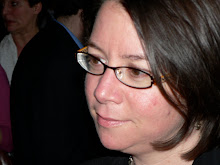(Dale usually takes the pictures... we are grateful for that although sorry he's not visible.) The boys love spending all this time together, both with the family and just with each other. They get along fantastically well and provide a lot of mutual entertainment.
We do approximately one major touristy thing a day, and eat out a lot. So far we have been to the new Exploratorium and the Contemporary Jewish Museum (which had the best pastrami and corned beef I think I've ever had), and seen a terrific little production of A Year with Frog and Toad. Dad and Dale and I saw the second Hobbit movie while the children had a sleepover at Jes and Deena's. In between we read books and build legos. It's delightful and easy.
I was especially interested in visiting the Exploratorium, because I worked there as an Explainer in high school, and it had a huge influence on me. It's what got me started in physics. It's also what got me started in physics education: I spent the first semester of my first physics class (senior year) waiting for the class to get to the Exploratorium kind of stuff, and it never happened, and I was disappointed but dug into the challenge of applying apparently arbitrary formulas. It was not until I got to graduate school that I felt like I was seeing the Exploratorium spirit in Physics by Inquiry, and in physics education research more broadly. I loved that place. I felt like it was teaching us all that we could open our eyes to the wonder of the phenomena surrounding us, and figure out how things work.
The Exploratorium has enthusiastically moved from its historic location at the Palace of Fine Arts to a new home on the Embarcadero, and the new site is terrific. The boys could have stayed there all day. Jordan explored exhibits about light and magnetism; Aaron got particularly engaged with a table of circuit elements. Both of them loved the gyroid play structure, which is based on a shape defined by a NASA scientist looking for structurally sound forms.








